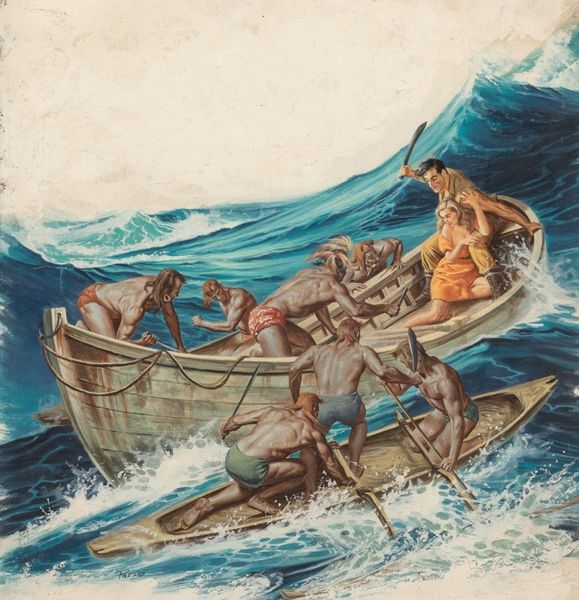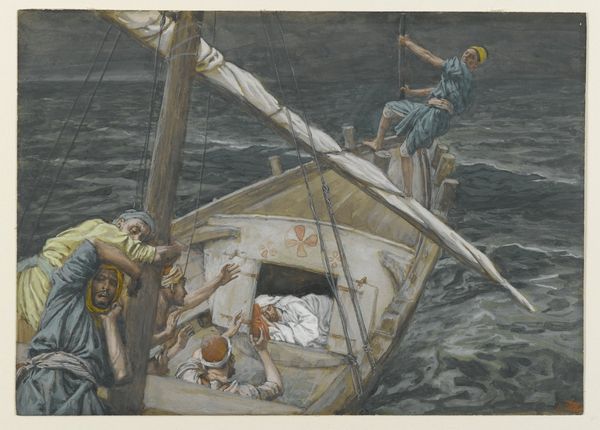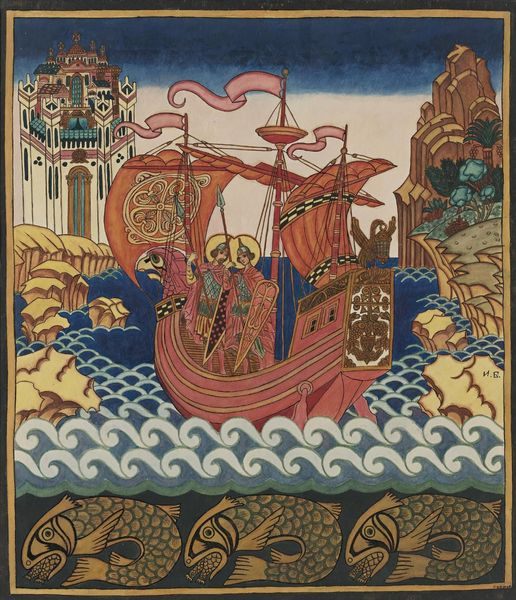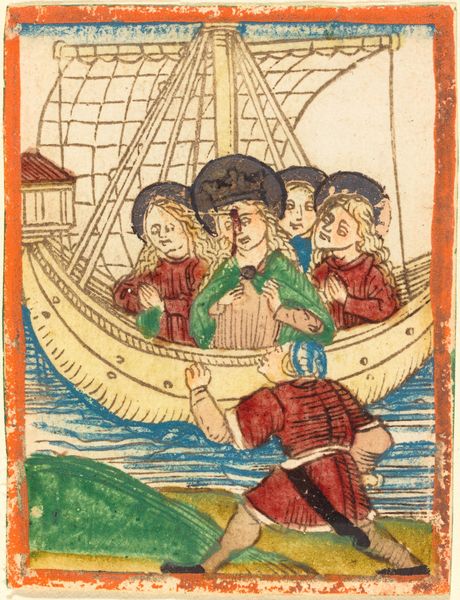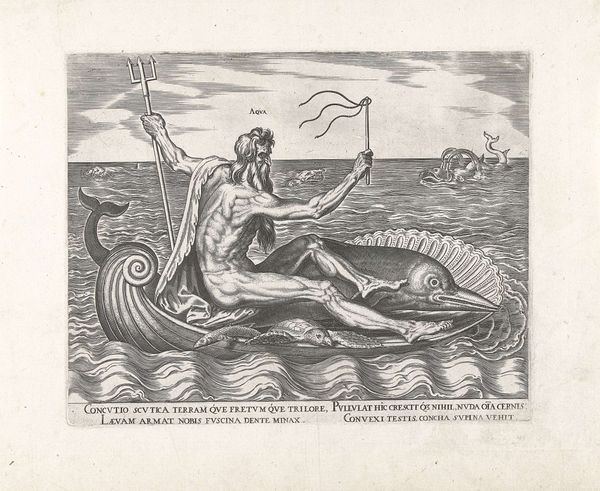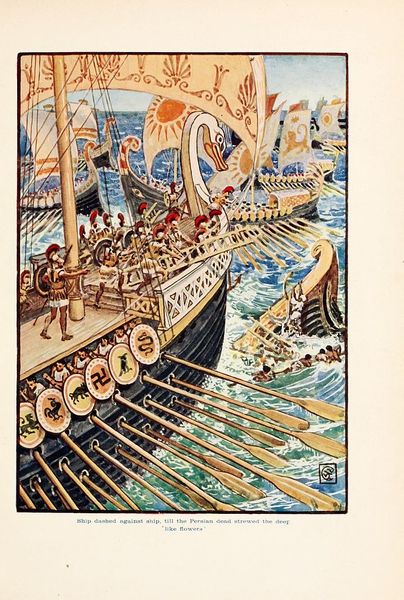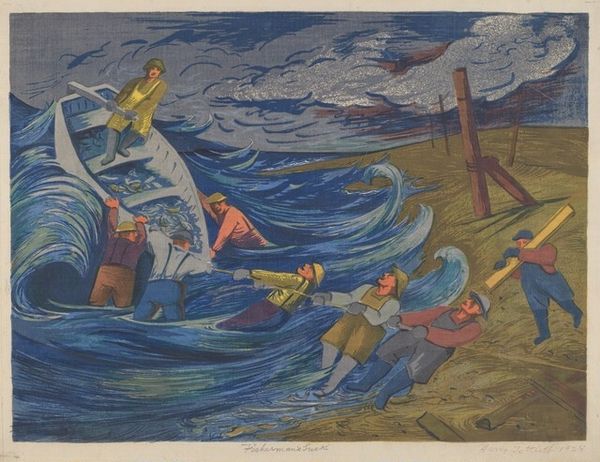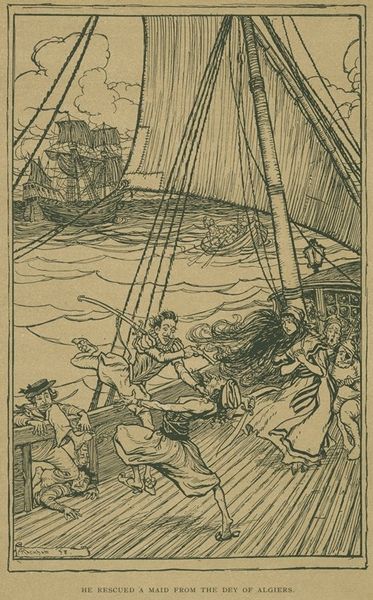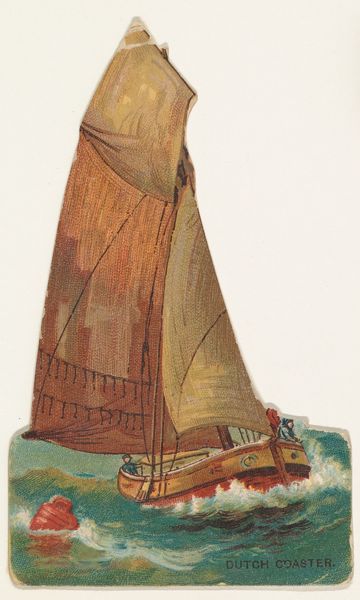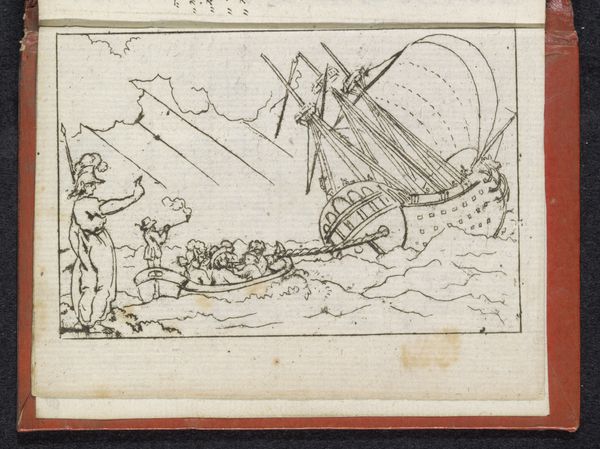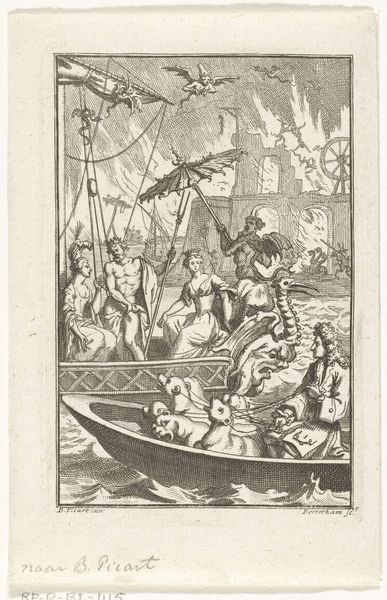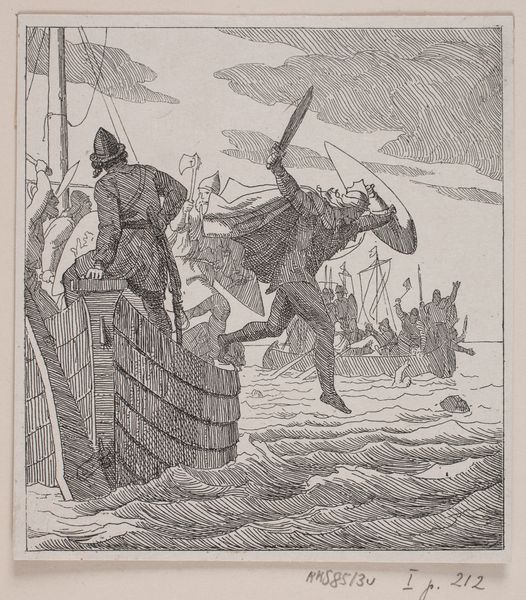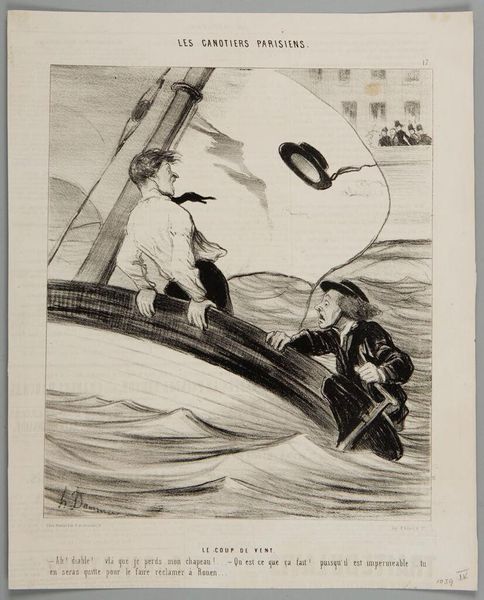
Illustration til Oehlenschläger med havfrue og en konge på et skib indpasset i rammeudkast 1862 - 1937
0:00
0:00
drawing, coloured-pencil, painting, watercolor
#
drawing
#
coloured-pencil
#
narrative-art
#
painting
#
landscape
#
fantasy-art
#
figuration
#
watercolor
#
coloured pencil
#
symbolism
Dimensions: 360 mm (height) x 250 mm (width) (bladmaal)
Curator: Agnes Slott-Møller created this illustration sometime between 1862 and 1937; it is entitled "Illustration til Oehlenschläger med havfrue og en konge på et skib indpasset i rammeudkast". We believe the artist used watercolor and coloured pencil to make this drawing. Editor: Wow, there's something so dreamlike and melancholy about it, even though it’s, like, half-finished. That mermaid looks so...yearning. It’s like she is beckoning. Curator: The yearning seems connected to its historical context. Consider the 19th-century fascination with folklore and the mythical, particularly figures like mermaids, which represent a liminality. Slott-Møller would likely have been influenced by Hans Christian Andersen's "The Little Mermaid," where the mermaid figure embodies longing and unattainable desire. Editor: Yeah, and she isn't all sexed up; there is this kind of innocence about her and a melancholy pose; she feels like a representation of purity meeting worldly disappointment, you know? It really emphasizes the tragedy, and then there is the stoic king! What's HIS story? Curator: Given the period, we can delve into gender roles and power dynamics. The mermaid, a powerful yet ultimately powerless figure in many narratives, contrasts with the king on the ship, a symbol of patriarchal authority and conquest. It hints at how women are often sidelined within national narratives or creative canons. I see him as uninterested; in that period, his world was expanding outward from the ship, and hers was a static and watery one. Editor: So true. I'm just thinking now about those rigid squares down the bottom of the drawing and that empty space above; what about them? Is it about the artist, perhaps about something half-finished that may never fully see the light? A stifled creation of some sort? Curator: Potentially. It's compelling to consider this as a study, rather than a finished work. The visible framework invites us to question what stories are left unfinished and by whom, which often ties into broader systemic inequalities. This also feels like something new being brought up as women came into greater power at the time this piece was finished. Editor: Food for thought. I like the melancholy. I feel as if I could almost reach into my own life. So real! Curator: Absolutely, a perfect glimpse into those complexities.
Comments
No comments
Be the first to comment and join the conversation on the ultimate creative platform.
